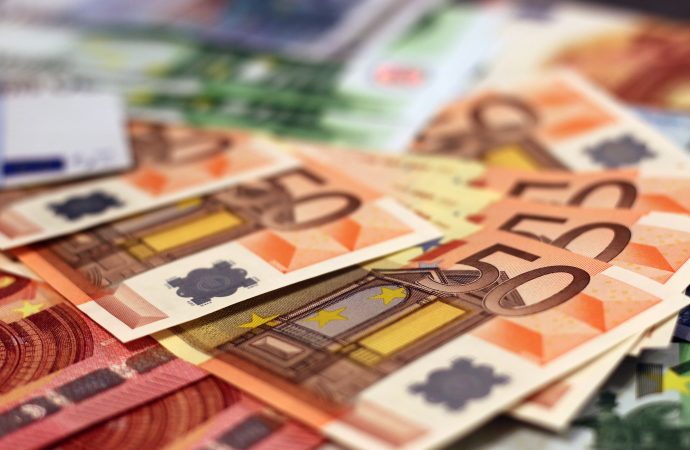Are you looking for a way to invest your money that not only provides financial returns but also helps make the world a better place? Look no further than sustainable ETFs. With more and more investors demanding ethical investment options, sustainable ETFs are gaining popularity in Europe. Not only do they provide an opportunity to
Are you looking for a way to invest your money that not only provides financial returns but also helps make the world a better place? Look no further than sustainable ETFs. With more and more investors demanding ethical investment options, sustainable ETFs are gaining popularity in Europe. Not only do they provide an opportunity to invest in companies with strong environmental, social, and governance (ESG) practices, but they can also save you money in the long run. In this blog post, we’ll explore how switching to sustainable ETFs can benefit both your wallet and the planet.
What are Sustainable ETFs?
Sustainable ETFs are exchange traded funds that focus on investing in companies that have a positive environmental, social, and governance (ESG) impact. For example, a sustainable ETF might invest in companies that are leaders in renewable energy or companies with strong employee diversity policies.
Sustainable ETFs offer investors a way to align their investments with their values and make a positive impact on the world. In addition, sustainable investing can also be a smart financial decision. A growing body of evidence suggests that ESG factors can affect a company’s bottom line and stock performance.
For European investors looking to switch to sustainable ETFs, there are a number of options available. Some popular sustainable ETFs include the iShares MSCI KLD 400 Social Index ETF (DSI) and the SPDR S&P 500 Fossil Fuel Free ETF (SPYX).
The Different Types of Sustainable ETFs
There are a few different types of sustainable ETFs available for investors interested in saving money while making an impact. Broadly, these funds can be classified as those that track environmental, social, and governance (ESG) criteria and those that specifically target investments in companies with a positive environmental or social impact.
There are also a number of sub-categories within these two broad groups. For example, some sustainable ETFs focus on clean energy or water resources, while others may invest in companies that are leaders in gender diversity or employee relations.
Investors should carefully consider their goals and objectives before selecting a sustainable ETF. While all of these funds offer the potential to generate returns and make an impact, there is significant variation in terms of risk and return profiles.
Some sustainable ETFs may also have higher expense ratios than traditional ETFs due to the need to screen for ESG criteria or invest in niche areas. However, many of these funds have outperformed the market over the long term, so they may be worth the extra cost.
Pros and Cons of Sustainable ETFs
As the European Union steps up its efforts to combat climate change, more and more investors are turning to sustainable ETFs. These funds aim to track indexes made up of companies that are leaders in environmental, social, and governance (ESG) factors.
There are a number of advantages to investing in sustainable ETFs. For one, they can help you align your investments with your values. If you’re concerned about climate change or want to support companies that are working to make a positive impact, sustainable ETFs offer a way to do that with your money.
Additionally, sustainable ETFs can provide financial benefits. Studies have shown that companies with strong ESG profiles tend to outperform those without them over the long term. This is due to a number of factors, including lower risk and greater access to capital. As a result, investing in sustainable ETFs can help you improve your financial returns while making a difference in the world.
Of course, there are also some drawbacks to consider before investing in sustainable ETFs. One is that these funds typically come with higher fees than traditional index funds. This is because they tend to be actively managed and often invest in smaller companies that may be less liquid than larger ones. Additionally, sustainability-focused ETFs may have narrower portfolios than traditional ones, meaning you could miss out on opportunities if the companies you’ve invested in underperform.
Overall, though, the pros outweigh the cons when it comes to investing in sustainable ETF
Why Europe is a Leader in Sustainable ETFs
Europe leads the world in sustainable investing, with over $1 trillion in assets under management (AUM) dedicated to environmental, social, and governance (ESG) strategies. This is more than double the amount of AUM invested in sustainable ETFs globally.
The rise of sustainable investing in Europe can be attributed to a number of factors, including the region’s strong commitment to combating climate change. In 2015, the European Union committed to reducing greenhouse gas emissions by at least 40% below 1990 levels by 2030. To date, 27 out of 28 member states have ratified the Paris Agreement, which further underscores Europe’s dedication to fighting climate change.
This commitment has translated into action, with a number of European countries taking steps to increase their use of renewable energy and bolster their green finance markets. For instance, France has pledged to end all coal-fired power generation by 2030, while Germany is aiming for 65% renewable energy by 2030. And in 2018, the EU issued its first ever Green Bond Principles, which provides guidance for issuers looking to raise capital for climate-friendly projects.
The growth of sustainable ETFs in Europe has been driven by both institutional and retail investors who are looking to align their investments with their values. A recent study found that nearly 60% of European investors say they would be willing to sacrifice some financial return in order to invest in a more sustainable way. This represents a significant shift in investor attitudes and underscores the growing demand for sustainable investing options.
How to Switch to a Sustainable ETF
The switch to a sustainable ETF is not as difficult as one might think. In fact, it can be quite easy and investors can save money while making an impact. Here are a few tips on how to switch to a sustainable ETF:
1. Do your research: There are many different types of sustainable ETFs available and it is important to find the one that best suits your investment goals. Make sure to read up on each option and compare performance before making your final decision.
2. Consider your timeframe: Sustainable ETFs can be short-term or long-term investments. If you are looking for a quick return, you may want to consider a short-term option. However, if you are more interested in the long-term impact of your investment, a long-term sustainable ETF may be the better choice.
3. Decide how much you want to invest: Once you have decided which type of sustainable ETF is right for you, it is time to determine how much money you would like to invest. This will help narrow down your options and make choosing the right ETF easier.
4. Open an account and start investing: The last step is to simply open an account with the chosen ETF provider and begin investing. Most providers offer easy-to-use online platforms that make buying and sellingETFs simple and straightforward.
By following these tips, switching to a sustainable ETF can be easy and investors can save money while making an impact on
Conclusion
Sustainable ETFs present a great opportunity for European investors who are looking to make an impact without sacrificing potential returns. By investing in sustainable ETFs, investors can reduce their environmental footprint and enjoy the financial benefits of broad diversification, low costs, and tax efficiency. This is just one way that investors can help improve the environment while also preserving their capital. As more companies embrace sustainability initiatives, it will become increasingly important for savvy investors to consider switching to more sustainable investment vehicles such as ETFs that track environmentally-friendly indices or sectors.





















Leave a Comment
Your email address will not be published. Required fields are marked with *